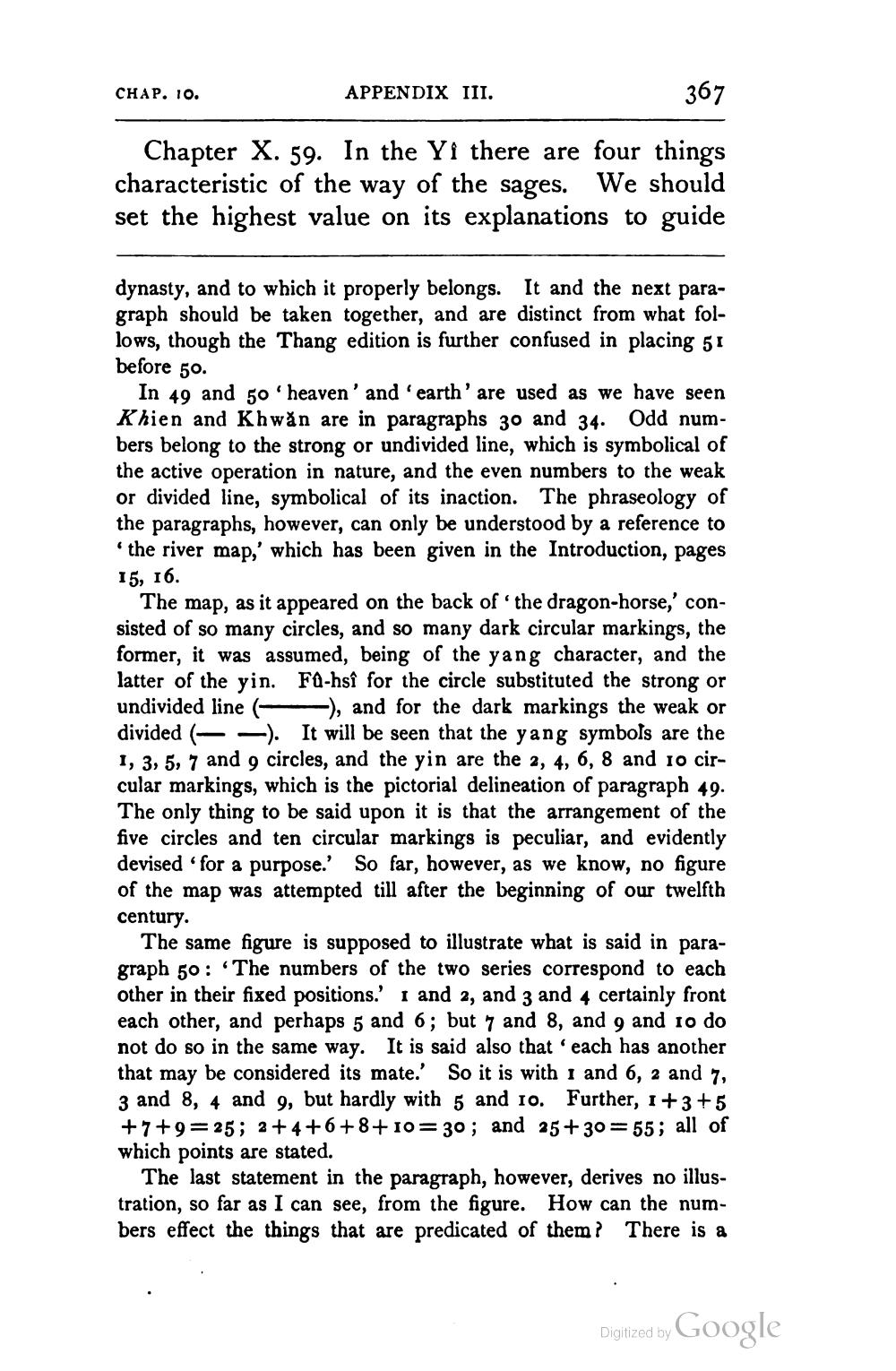________________
CHAP. 10.
APPENDIX III.
367
Chapter X. 59. In the Yi there are four things characteristic of the way of the sages. We should set the highest value on its explanations to guide
dynasty, and to which it properly belongs. It and the next paragraph should be taken together, and are distinct from what follows, though the Thang edition is further confused in placing 51 before 50.
In 49 and 50' heaven' and earth' are used as we have seen Khien and Khwăn are in paragraphs 30 and 34. Odd numbers belong to the strong or undivided line, which is symbolical of the active operation in nature, and the even numbers to the weak or divided line, symbolical of its inaction. The phraseology of the paragraphs, however, can only be understood by a reference to
the river map,' which has been given in the Introduction, pages 15, 16.
The map, as it appeared on the back of the dragon-horse,' consisted of so many circles, and so many dark circular markings, the former, it was assumed, being of the yang character, and the latter of the yin. Fü-hsî for the circle substituted the strong or undivided line ), and for the dark markings the weak or divided (-- -). It will be seen that the yang symbols are the 1, 3, 5, 7 and 9 circles, and the yin are the 2, 4, 6, 8 and 10 circular markings, which is the pictorial delineation of paragraph 49. The only thing to be said upon it is that the arrangement of the five circles and ten circular markings is peculiar, and evidently devised 'for a purpose.' So far, however, as we know, no figure of the map was attempted till after the beginning of our twelfth century.
The same figure is supposed to illustrate what is said in paragraph 50 : The numbers of the two series correspond to each other in their fixed positions.' i and 2, and 3 and 4 certainly front each other, and perhaps 5 and 6; but 7 and 8, and 9 and 10 do not do so in the same way. It is said also that each has another that may be considered its mate.' So it is with 1 and 6, 2 and 7, 3 and 8, 4 and 9, but hardly with 5 and 1o. Further, 1 + 3 + 5 +7+9= 25; 2+4 +6 +8+10= 30; and 25+30=55; all of which points are stated.
The last statement in the paragraph, however, derives no illustration, so far as I can see, from the figure. How can the numbers effect the things that are predicated of them? There is a
Digitized by Google




